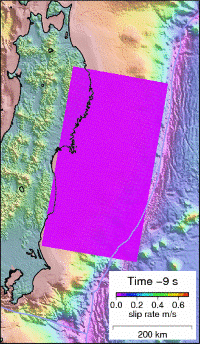
About
Satoshi IDE, Professor, Department of Earth and Planetary Science, The University of Tokyo
Earthquakes are a frightening phenomenon, but as a physical phenomenon, they are also full of mysteries, making accurate predictions difficult. Since I began studying earthquakes in the early 1990s, I have been aware of the challenges in contributing to society with each seismic disaster, such as the 1995 Kobe earthquake and the 2011 Tohoku-Oki Earthquake. Nevertheless, we have gradually deepened our scientific understanding of earthquakes. In our laboratory, we clarify the various properties of earthquakes, from large to small, and from fast to slow, aiming for better future forecasting through a comprehensive understanding of them.

Research: Toward comprehensive understanding of earthquakes
Very large earthquakes are rare, but have significant impact to society, while many small earthquakes occur every day without notice. Earthquakes of all size are physically understood as rupture, frictional slip with fracture, on faults inside the Earth, with the radiation .and propagation of seismic waves. The faults can be as small as the boundary of nanoscale crystal boundary in rocks, or as large as the whole interface between two interacting tectonic plate. Shaking by dynamic rupture can be very strong, while some rupture may occur silently without observable seismic waves. Thus “earthquake” contains various phenomena of different scale and speed. What makes such differences? Comprehensive understanding of earthquakes requires knowledge about slow tectonic deformation, and governing equations of physical processes included in dynamic rupture, with variation in environmental conditions for each seismic region. We try to understand the complexity and diversity of earthquakes as simple as possible, and improve our ability to forecast future earthquakes.
High resolution imaging of complex earthquake rupture

Earthquakes are observed at many seismic stations. We utilize seismic data from these stations to image dynamic rupture process during each earthquake. This is slip inversion method, which we have been developing for decades. For example, the rupture of the 2011 Tohoku-Oki earthquake was imaged as shown in movie. The rupture occurred on the plate interface of about 400 km x 200 km, for about 100 seconds. Especially large slip occurred at the shallow part of the fault near the Japan trench, which was responsible for the devastated tsunamis. We have imaged various earthquakes using similar way: from large events like the 1995 Kobe earthquake and 2003 Tokachi-Oki earthquake, to tiny rock burst in South African gold mines. We also developed methods to investigate underground stress conditions and friction laws, using the results of slip inversion.
Modeling hierarchal rupture process of earthquakes

Earthquake rupture is numerically simulated with the assumptions of friction laws on the interface inside elastic media, to understand fundamental processes governing earthquake rupture. Among various natures of earthquakes, we recently focus on the hierarchical rupture on faults with multiscale heterogeneity. Any earthquake rupture starts from the failure of a tiny region in rocks, and grows into the failure of much larger heterogeneous structures. High-quality seismic observations can resolve hierarchical slip process in real earthquakes. In one of our early works (Fig), we simulated dynamic rupture on a fault with many circular patches with fractal size-frequency distribution. In this model, each earthquake starts from the smallest patch and successively trigger ruptures of nearby larger patches, as a cascading sequence governed by randomness. Hierarchy and randomness are important factors controlling the predictability of earthquakes.
Unified understanding of fast and slow earthquakes

Each earthquake is complex, but in average earthquakes follow several scaling laws. For example, the energy of seismic waves is proportional to the seismic moment, which is the static size of fault movement. The seismic moment is proportional to the cube of the rupture duration. These scaling laws suggest that earthquakes are almost scale-free, self-similar phenomena. However, strange earthquake-like phenomena that do not follow typical scaling laws have been discovered in these decades. In western Japan, tectonic tremors, very low-frequency earthquakes, and slow slip events occur simultaneously at the same place (fig). These are slow rupture events of different size with very weak seismic signals, only slightly above the detection limit. They are considered as observation of a broadband slow earthquake in different frequency range, or scale. This broadband slow earthquake has own scaling laws, different from those of ordinary, fast, earthquakes. Similar phenomena have been found in many place worldwide, and seem to be related to the large earthquakes. We are investigating slow earthquakes using observation, data analysis, and numerical modeling, and try to make a uniform view of fast and slow earthquakes.